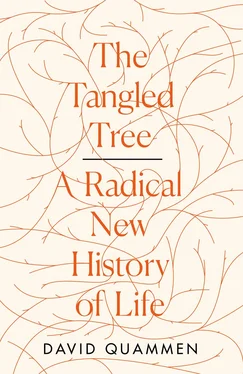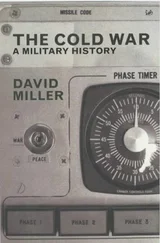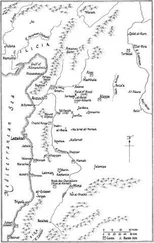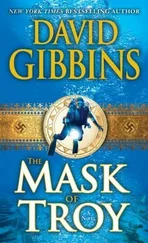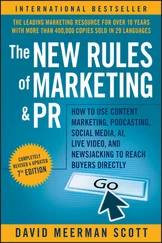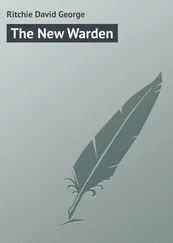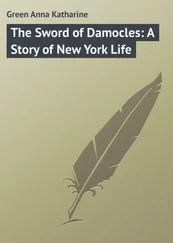Around the time Sogin finished his doctorate and prepared to leave, Woese hired a young woman named Linda Bonen, a walk-in from a different building, to take on some of the technical work. Raised in rural Ontario, she had come down to the University of Illinois and gotten a master’s degree in biophysics. Woese trained her for this new lab work himself—how to chop the RNA into fragments, how to run the electrophoresis in two dimensions, how to prepare the films, even a bit about how to interpret them, deducing which spot on a film represented which fragment, which little blurt of letters. Was it UCUCG, or was it UUUCG? Tricky to tell. But here’s GAAGU, obviously different. Woese coached her patiently on the tasks and their meaning.
“He was very good about bringing me along,” Bonen recalled four decades later, when I visited her at the University of Ottawa, where she was by then a biology professor herself, gray haired, deeply expert in molecular genetics, gentle mannered as a schoolteacher. “The end product would be a ‘catalog’ for microbe X,” she said, meaning simply a list of the different fragments found within the 16S rRNA molecules of that creature. A catalog. If the fragments resembled words, these catalogs were the paragraphs. Comparing one catalog with another revealed the degree of similarity between any two organisms, by a very precise standard, and more dissimilarity could be taken to reflect more distance in evolutionary time. Where had the great limbs diverged from the trunk, the big branches from the limbs—and why there, and why then, and leading to what creatures? Beyond the mind-numbing methodology of data collection, those were the questions Woese hoped to answer.
What was he like, I asked Bonen, as a boss and a teacher?
“Well, he never came across as a boss,” she said. “He was very soft-spoken and quiet, reserved. I’m sure you’ve …” She hesitated. “Did you know him yourself? Did you ever meet him?”
Never. I didn’t explain to her, but the reason was simple: Woese died, in late 2012, an old man taken down hard and fast by pancreatic cancer, just before I picked up the trail.
“To everybody, he was Carl,” she said. “He was not a boss.”
Bonen showed me a photograph, a memento from her personal files: the youngish Carl Woese in his lab, bathed by yellow-green light, jaw set firmly, gazing up at a pattern of dark spots. Short brown hair, striped sport shirt, handsome and jaunty enough to have stood onstage amid the Beach Boys. Almost apologetically, she said: “That’s the only good picture I have.” This was all different from what I had expected. My mental image was of the later man: the shy, crotchety, and august Dr. Carl Woese.
He was shy, yes, Bonen said. But “august,” no, that was wrong, not a word she would ever … and here again her voice fell away. Then she added: “I only knew him in a short period of time.”
Ken Luehrsen, soon after Linda Bonen’s short period, had a different sort of experience in the Woese lab. He was an undergraduate at Illinois when he first encountered Woese as one of the instructors for a seminar in developmental biology, well outside Woese’s field of expertise. The logic behind this mismatch, according to Luehrsen, was that “ other professors just liked to hear Carl’s take on things so they might incorporate some of his ideas into their own research.” Woese was notoriously brilliant, full of ideas, but jealous of his expended effort. “Undoubtedly, Carl found an opportunity to get a teaching credit where he didn’t have to do too much work.” In a seminar, students would be assigned to make presentations explicating this journal paper or that one, and Woese could easily moderate the discussion. He hated classroom teaching of the more arduous sort—preparing and delivering lectures, God forbid—because “he felt it took him away from his real love: understanding the origin and evolution of life.”
After the seminar acquaintance, Luehrsen went to this formidable figure and asked to do an honors project under his guidance. Woese not only accepted him but also, to Luehrsen’s surprise, “ he plopped me down in his office,” a very small room containing two desks, both covered with chaotic stacks of papers, and said (either seriously or as a tease) that it was so he “could keep an eye on me.” Luehrsen was befuddled. Should he really be there? Should he scram whenever the phone rang and give Woese his privacy? His discomfort eased when he saw that Woese himself spent little time in that office and most of his time in the lab, “reading 16S rRNA fingerprints at his light board.”
After Woese’s death, Ken Luehrsen wrote a short memoir describing the man’s work, his temperament, and their interactions so long ago, for publication with other Woese tributes in a scientific journal. He brought it all to mind again when I tracked him down in San Carlos, California, on the edge of Silicon Valley, where he was now a senior scientist and biotech inventor in the late afternoon of his career, consulting for a small company lodged behind glass doors in an office park. By that time, he held many patents in biotechnology, for methodologies to create antibodies and other molecular products, and lived comfortably in an old counterculture enclave across the peninsula, a place known as Half Moon Bay, from which he could commute to the action. He worked when he felt like it. At this firm, he was the grizzled elder, surrounded by smart young colleagues seated in carrels, for whom “Woese” was at most a dimly recognizable name, like “Darwin” or “Fibonacci.” Tall and thin, with a goatee, relaxed and a little sardonic, Luehrsen suggested we escape downtown for sushi—after which we talked for most of the afternoon.
“I may have been a junior at the time,” he said about his first acquaintance with Woese. “I didn’t know anything.” Despite Luehrsen’s ignorance, the great man invested some effort in him; a private tutorial was less abhorrent to Woese than lecturing at banks of indifferent faces. “He explained to me what he was doing. I maybe understood a quarter of it.” But the youngster paid close attention and caught on fast. “I think he saw somebody who was interested, and I was a pretty hard worker.”
It was 1974 when Luehrsen joined the Woese lab as an undergraduate assistant, paired with a graduate student and assigned the unenviable job of extracting radioactive rRNA from bacterial cultures. They would dump ten millicuries (a large dose) of P-32 into this culture or that and, after overnight incubation to let the bacteria suck it up, spin the mixture in a centrifuge to gather the hot bacteria into a little pellet. After dissolving the pellet in a buffer, they would squash that brew through the laboratory version of a French press, not too unlike the one you might use for coffee. This served to rip open the bacterial cells and set their innards adrift. Luehrsen and his partner would then pull out the ribosomal RNA by chemical extraction, after which the different fractions—the 16S molecules versus the others, including that shorter one, known as 5S—were separated using Mitch Sogin’s home-built cylinders of acrylamide gel. In addition to acrylamide (today recognized as a probable carcinogen), they were working with phenol, chloroform, ethanol, and the radioactive phosphorus. “ What a mess that often was!The Geiger counter was always screaming,” Luehrsen wrote in his memoir.
One of the bacteria he cultured and squashed was Clostridium perfringens , the microbe responsible for gas gangrene, an ugly form of necrosis that takes hold in muscle tissue made vulnerable by wounds, especially the sort that lay open among injured soldiers on battlefields. When he realized this, Luehrsen complained, but Woese “just chuckled and said not to worry” in the absence of an open wound. He had been to medical school for “two years and two days,” Woese said, and he could assure Luehrsen that Clostridium perfringens was unlikely to give him gangrene. Luehrsen took the episode as a lesson—not a lesson to trust Woese but to rely on his own perspicacity more—and never probed the matter of why Woese had quit medical school two days into his third-year rotation in pediatrics.
Читать дальше
